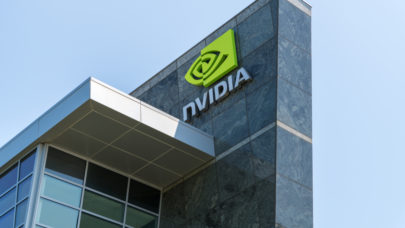
EU Grabs Arm for First Exaflops Supercomputer, x86 Misses Out
October 4, 2023
The configuration of Europe's first exascale supercomputer, Jupiter, has been finalized, and it is a win for Nvidia and a disappointment for x86 chip vendors In Read more…

Q&A with Terri Quinn, an HPCwire Person to Watch in 2023
June 16, 2023
HPCwire 2023 Person to Watch Terri Quinn is the deputy associate director for high-performance computing at Lawrence Livermore National Laboratory (LLNL). Quinn has been with LLNL for nearly 40 years, starting as a software engineer in 1984 after a few years as a nuclear engineer in the U.S. Navy Reserve. Read more…

Cerebras Chip Part of Project to Spot Post-exascale Technology
October 19, 2022
Cerebras Systems has secured another U.S. government win for its wafer scale engine chip – which is considered the largest chip in the world. The company's chip technology will be part of a research project sponsored by the National Nuclear Security Administration to find... Read more…

Supercomputer Models Explosives Critical for Nuclear Weapons
August 6, 2022
Lawrence Livermore National Laboratory (LLNL) is one of the laboratories that operates under the auspices of the National Nuclear Security Administration (NNSA), which manages the United States’ stockpile of nuclear weapons. Amid major efforts to modernize that stockpile, LLNL has announced that researchers from its own Energetic Materials Center... Read more…

AMD’s MI300 APUs to Power Exascale El Capitan Supercomputer
June 21, 2022
Additional details of the architecture of the exascale El Capitan supercomputer were disclosed today by Lawrence Livermore National Laboratory’s (LLNL) Terri Read more…

At GTC22, HPC and AI Get Edgy
March 30, 2022
From weather sensors and autonomous vehicles to electric grid monitoring and cloud gaming, the world’s edge computing is getting increasingly complex — but the world of HPC hasn’t necessarily caught up to these rapid innovations at the edge. At a panel at Nvidia’s virtual GTC22 (“HPC, AI, and the Edge”), five experts discussed how leading-edge HPC applications... Read more…

NNSA Selects Dell for $40M CTS-2 Commodity Computing Contract
September 28, 2021
In support of the Department of Energy’s National Nuclear Security Administration (NNSA), the Tri-Lab CTS-2 system contract award was announced last week. The NNSA TriLab partnership – comprising Livermore, Los Alamos and Sandia national labs – awarded Dell Technologies... Read more…

Winter Classic Cluster Competition: Meet the First Five
March 11, 2021
Through the magic of video and Zoom, we've reached out to five Winter Classic Invitational cluster competition teams for our trademark up close and personal interviews. Our associate Jessi Lanum has given us Cliff Notes for each interview, along with some teasers, but check out the videos to get... Read more…

- Click Here for More Headlines

Whitepaper
Transforming Industrial and Automotive Manufacturing
In this era, expansion in digital infrastructure capacity is inevitable. Parallel to this, climate change consciousness is also rising, making sustainability a mandatory part of the organization’s functioning. As computing workloads such as AI and HPC continue to surge, so does the energy consumption, posing environmental woes. IT departments within organizations have a crucial role in combating this challenge. They can significantly drive sustainable practices by influencing newer technologies and process adoption that aid in mitigating the effects of climate change.
While buying more sustainable IT solutions is an option, partnering with IT solutions providers, such and Lenovo and Intel, who are committed to sustainability and aiding customers in executing sustainability strategies is likely to be more impactful.
Learn how Lenovo and Intel, through their partnership, are strongly positioned to address this need with their innovations driving energy efficiency and environmental stewardship.
Download Now
Sponsored by Lenovo
Whitepaper
How Direct Liquid Cooling Improves Data Center Energy Efficiency
Data centers are experiencing increasing power consumption, space constraints and cooling demands due to the unprecedented computing power required by today’s chips and servers. HVAC cooling systems consume approximately 40% of a data center’s electricity. These systems traditionally use air conditioning, air handling and fans to cool the data center facility and IT equipment, ultimately resulting in high energy consumption and high carbon emissions. Data centers are moving to direct liquid cooled (DLC) systems to improve cooling efficiency thus lowering their PUE, operating expenses (OPEX) and carbon footprint.
This paper describes how CoolIT Systems (CoolIT) meets the need for improved energy efficiency in data centers and includes case studies that show how CoolIT’s DLC solutions improve energy efficiency, increase rack density, lower OPEX, and enable sustainability programs. CoolIT is the global market and innovation leader in scalable DLC solutions for the world’s most demanding computing environments. CoolIT’s end-to-end solutions meet the rising demand in cooling and the rising demand for energy efficiency.
Download Now
Sponsored by CoolIT
Advanced Scale Career Development & Workforce Enhancement Center
Featured Advanced Scale Jobs:
HPCwire Resource Library
HPCwire Product Showcase
© 2024 HPCwire. All Rights Reserved. A Tabor Communications Publication
HPCwire is a registered trademark of Tabor Communications, Inc. Use of this site is governed by our Terms of Use and Privacy Policy.
Reproduction in whole or in part in any form or medium without express written permission of Tabor Communications, Inc. is prohibited.
























